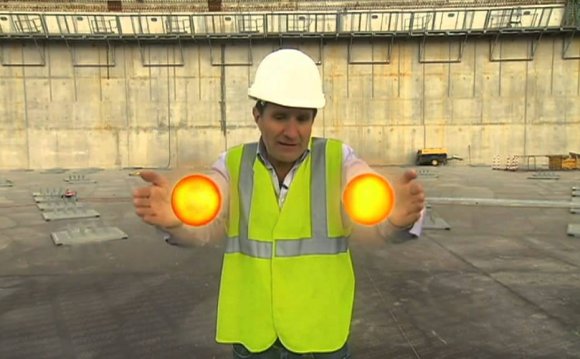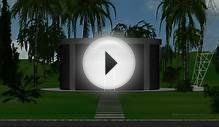
 By David Shukman Science editor, BBC News
By David Shukman Science editor, BBC News
Image caption The foundations for Iter's tokamak - which will contain the hot plasma - have been laid
The world's largest bid to harness the power of fusion has entered a "critical" phase in southern France.
The Iter project at Cadarache in Provence is receiving the first of about one million components for its experimental reactor.
Dogged by massive cost rises and long delays, building work is currently nearly two years behind schedule.
The construction of the key building has even been altered to allow for the late delivery of key components.
"We're not hiding anything - it's incredibly frustrating, " David Campbell, a deputy director, told BBC News.
"Now we're doing everything we can to recover as much time as possible.
"The project is inspiring enough to give you the energy to carry on - we'd all like to see fusion energy as soon as possible."
Fusion facts
- Fusion is the process that powers the stars including the Sun
- One litre of water contains enough deuterium, when fused with tritium, to produce the equivalent energy of 500 litres of petrol
- A 1, 500MW fusion power station would consume about 600g of tritium and 400g of deuterium a day
- The first large-scale use of fusion was by the US military with the detonation of Ivy Mike, a hydrogen bomb, on 1 November 1952.
- Iter's design involves a tokamak, the Russian word for a ring-shaped magnetic chamber
- The magnetic field is designed to contain 100 million degree plasma, the temperature required for the fusion process
- The US, while supporting Iter as a partner, is also funding the National Ignition Facility, which uses lasers to heat and compress hydrogen to the point of fusion
- South Korea, another Iter partner, is investing $941m in a fusion technology demonstrator, K-DEMO, which could be the first to generate Grid power
- Critics object to further research into nuclear power and question the likely costs of commercial operations
After initial design problems and early difficulties co-ordinating this unique international project, there is now more confidence about the timetable.
Since the 1950s, fusion has offered the dream of almost limitless energy - copying the fireball process that powers the Sun - fuelled by two readily available forms of hydrogen.
The attraction is a combination of cheap fuel, relatively little radioactive waste and no emissions of greenhouse gases.
But the technical challenges of not only handling such an extreme process but also designing ways of extracting energy from it have always been immense.
In fact, fusion has long been described as so difficult to achieve that it's always been touted as being "30 years away".
Now the Iter reactor will put that to the test. Known as a "tokamak", it is based on the design of Jet, a European pilot project at Culham in Oxfordshire.
It will involve creating a plasma of superheated gas reaching temperatures of more than 200 million C - conditions hot enough to force deuterium and tritium atoms to fuse together and release energy.
The whole process will take place inside a giant magnetic field in the shape of a ring - the only way such extreme heat can be contained.
The plant at JET has managed to achieve fusion reactions in very short bursts but required the use of more power than it was able to produce.
The reactor at Iter is on a much larger scale and is designed to generate 10 times more power - 500 MW - than it will consume.
Media captionFrance's fusion reactor would work like the sunIter brings together the scientific and political weight of governments representing more than half the world's population - including the European Union, which is supporting nearly half the cost of the project, together with China, India, Japan, Russia, South Korea and the United States.
Contributions are mainly "in kind" rather than in cash with, for example, the EU providing all the buildings and infrastructure - which is why an exact figure for cost is not available. The rough overall budget is described as £13bn or 15bn euros.
YOU MIGHT ALSO LIKE












